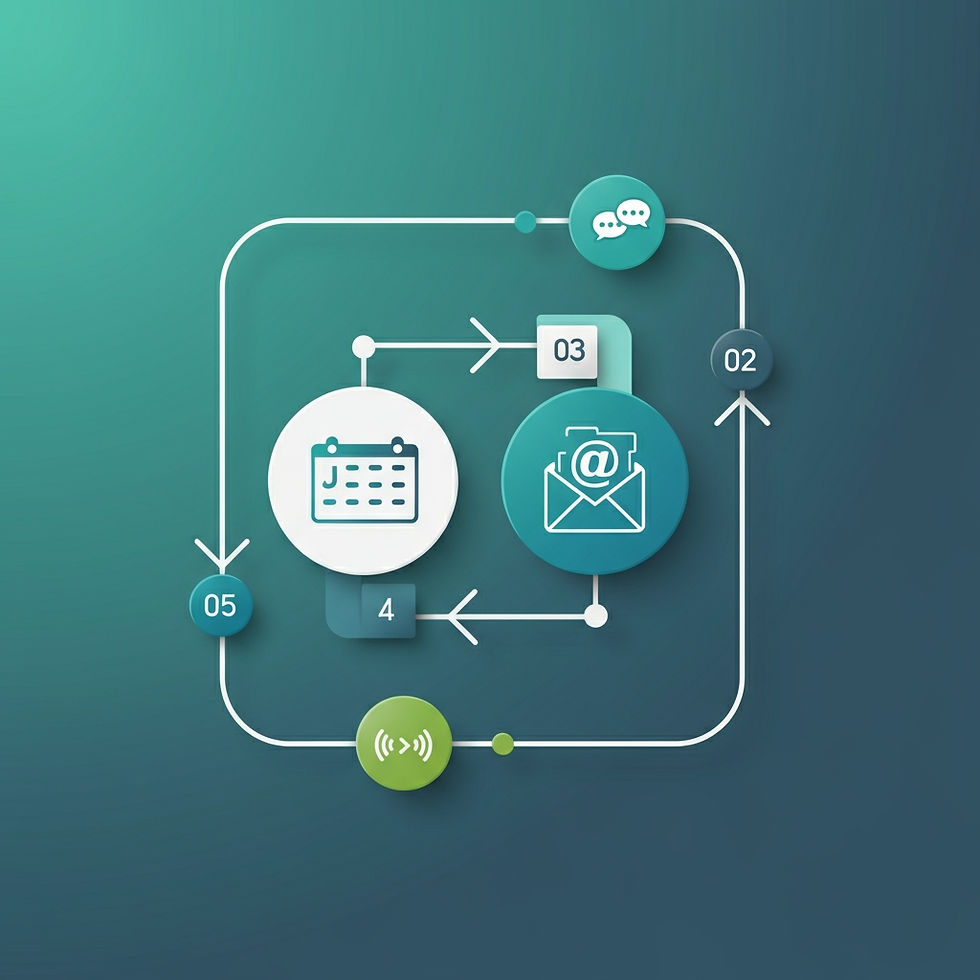Ops + VA: Why Delegation Alone Isn’t Enough
- alexis2082
- Aug 13
- 3 min read

Hiring a virtual assistant (VA) can be a game-changer. They take on time-consuming tasks, allowing you to focus on bigger goals. But many business owners make one big mistake they think hiring a VA will solve all their problems instantly. The truth is, delegation alone isn't enough.
Without clear processes and tools, even the best VA will struggle. This blog explains why operational systems (Ops) matter and how they help both you and your VA thrive.
Delegation Without Systems = Chaos
Imagine this: you hire a VA to help with emails, scheduling, and data entry. You quickly share the tasks verbally or through a few random notes. The VA starts working, but soon issues appear:
Emails are sent to the wrong people.
Meetings are double-booked.
Deadlines are missed because the priorities aren’t clear.
What went wrong? The VA didn’t have a roadmap. Without processes to guide them, even simple tasks can turn into confusion.
This isn’t the VA’s fault. It’s like asking someone to build a house without a blueprint or tools. When we don’t provide structure and guidance, inefficiency is bound to happen.
Why Operational Systems Make All the Difference
Strong operational systems act like the backbone of your business. Systems are the rules, workflows, and tools that keep everything running smoothly. They provide clarity and consistency. When these are in place, your VA can focus on doing their job instead of guessing.
Key Benefits of Strong Systems
Easier Training: With clear processes, onboarding a VA becomes much simpler. For example, instead of explaining everything from scratch, you can hand them a checklist or guide.
Less Confusion: Systems eliminate gray areas. The VA knows exactly what to do and how to do it.
Efficiency: Time isn’t wasted figuring out processes or solving miscommunications.
Scalability: Once systems are in place, it’s easier to expand or assign tasks to more team members later.
Examples of Poor vs. Strong Systems
Example 1: Email Management
No System: “Reply to emails and just handle anything important.”
The VA doesn’t know what’s truly important, leading to delays or mistakes.
With a System: “Create a folder system. Put client emails in ‘Priority,’ and internal emails in ‘Low Priority.’ Respond to clients within 24 hours, and flag anything urgent for me.”
Clear instructions help the VA act confidently and focus on what matters.
Example 2: Scheduling
No System: “Find a time that works for everyone for meetings next week.”
This vague task is time-consuming and results in errors, like scheduling during time zones conflicts.
With a System: “Use Calendly. Block one-hour slots for client calls on Mondays and 30-minute check-ins on Fridays.”
With tools and rules, scheduling becomes streamlined and effective.
Steps to Create Systems Before Hiring a VA
If you want to make the most of your VA’s time and skills, follow these steps to build strong systems first.

1. Map Out Your Current Tasks
Write down the regular tasks you handle now. Then, decide which ones you’ll delegate to the VA. This might include things like email management, social media, or invoicing.

2. Create Clear Processes
For each task, outline step-by-step instructions. Keep them simple and direct. For instance:
-Instead of saying, “Update my social media weekly,” write, “Create 3 posts every Friday. Use Canva for designs and share on Facebook at 8 AM EST.”

3. Use the Right Tools
The right tools can make your systems even stronger. Here are a few to consider:
Project Management Tools: Trello, Asana, or ClickUp help organize and track tasks.
File Sharing Tools: Google Drive and Dropbox make sharing documents simple.
Communication Tools: Slack or Zoom ensure easy and clear communication.

4. Set Expectations Early
From the start, share your goals, deadlines, and communication preferences. Make sure the VA knows what “success” looks like for each task.

5. Test the Process Yourself
Before handing off a task, walk through the process yourself. This helps identify weak spots or areas that might confuse the VA.

6. Be Open to Feedback
Once your VA starts working, ask if the systems work for them. They might have insights on how to improve things.
Why Delegation Alone Isn’t Enough
Delegation is a powerful tool. But without a strong operational foundation, you’re setting your VA—and your business—up for struggle. Clear systems and processes make everything flow smoothly. They take the guesswork out of tasks and free up time for what really matters.
Finally, remember that creating systems doesn’t have to be perfect on day one. Start small, improve over time, and involve your VA in the process. This partnership between strong Ops and a skilled VA will truly allow your business to grow.
Actionable Tip: Before hiring a VA, pick one recurring task you want to delegate. Create a simple system for it today. Test it out, refine it, and be ready to pass it on to your future VA.
%20(1).png)


